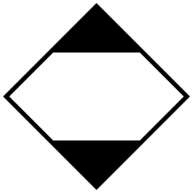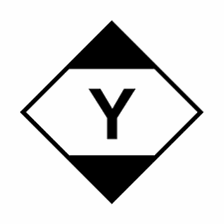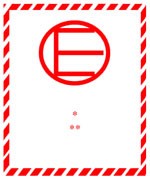ADR Limited Quantities Movements
If you are transporting limited quantities, you do not need to follow all of the normal packaging and labelling regulations. Also, you do not need a dangerous goods safety adviser if you are transporting ‘limited quantities’ of some dangerous goods.
Packing Limited Quantities
Goods shipped in limited quantities must be carried in small containers e.g. bottles which are then packed in boxes or on shrink-wrapped trays.
The maximum weight for boxes is 30kg and 20kg for shrink-wrapped trays. The maximum weight for individual containers depends on the type of goods.
These limits are listed in column 7a of the ‘Dangerous goods list’ in part 3 of ‘ADR’.
For certain goods, the limit in column 7a of Table A is zero. These goods cannot be shipped in limited quantities.
Limited Quantity (LQ) Exemptions (ADR 3.4)
Limited Quantity (LQ) refers to small receptacles, typically of the sort that feeds into the retail distribution chain, which is packed in boxes or on shrink-wrapped trays.
The principle behind LQ is that an acceptable level of safety is assured providing the receptacles are in a box or on a shrink-wrapped tray. Retail distribution of LQ packages that have been broken down' is allowed, subject to certain conditions. Subject to those conditions being met, no other requirements of ADR apply.
Note however that from 1 January 2011 there are requirements to mark certain transport units when carrying more than 8 tonnes of LQ packages. See ADR 3.4.10
Dangerous goods are assigned an LQ 'maximum quantity per inner packaging' see Column 7a of Table A in ADR. For some substances, this figure is 0, and in these cases, there is no LQ exemption.
ADR 3.4.2 and 3.4.3 specify the maximum gross mass of the package into which the inner receptacle is placed.
For limited quantity exemptions, the general requirements for packaging to be of good quality and suitable etc. apply, but the packaging does not have to be 'UN-approved'. ADR 3.4.4 has a particular requirement for certain Class 8 Corrosive goods. There are particular LQ marking requirements; see ADR 3.4.7 and 3.4.8. Subject to those conditions, ADR does not apply to limited quantities.

![]()
This is the Limited Quantity Mark

This is the mark if an Air Mode journey is involved
The mark must be a minimum of 100 mm x 100 mm unless the package is too small. In which case the minimum is 50 mm x 50 mm.
There is a requirement, under certain circumstances, for the marking of a transport unit which is carrying dangerous goods in limited quantities. See ADR 2015 paragraphs 3.4.11 to 3.4.15.
Examples of Limited Quantity Application
- Hydrochloric acid, UN 1789, (Strong PG II)
From column 7a of Table A, the maximum receptacle (inner packaging) size is 1 litre. This means that as long as the individual 'bottles' are not larger than 1 litre, and the box does not weigh more than 30 kg, then, subject to the conditions outlined above, ADR does not apply.
The same substance more diluted (PG III) has a maximum bottle size of 5 litres. Again the maximum box weight is 30 kg, ie typical 2 ½ litre bottles, packed four to a box, are within the LQ limit. The detailed packaging requirements do not have to be met but the LQ marking requirements apply (see above).
- Solid caustic soda drain cleaner (UN 1823)
The maximum inner receptacle size is 1 kg. Again the maximum gross overall package is 30 kg.
- Paint UN 1263 PG II.
Cans up to 5 litres may be packed in a box not exceeding a gross weight of 30kg. Cans up to 1 litre may be on a shrink-wrapped tray not exceeding a gross weight of 20 kg. Subject to the box or tray being marked as above ADR does not apply.
Orientation arrows have to be applied to LQ packages when the conditions described at ADR 5.2.1.9 apply.
ADR at 3.4.12 requires information to be given to carriers concerning consignments of LQ packages”. In certain circumstances, ADR 3.4.13, the vehicle has to be marked if carrying at least 8 tonnes of LQ packages.
Excepted Quantity (EQ) Exemptions (ADR 3.5)
Excepted Quantities (EQ) is a relatively new concept for land transport of dangerous goods. It has been commonly used in air transport and the new rules will facilitate the road and rail transport elements of a journey that includes air mode. It is, though, also a standalone provision, and gives consignors an alternative for many dangerous goods.
Like LQ it requires goods to be in combination packages (e.g. a bottle in a box).
|
New codes, E0 – E5 appear in column 7b of table A. This links to paragraph 3.5.1.2 which details what is allowed by the codes. Examples:
Unlike for LQ, there are more prescriptive rules about packaging testing and documentation. |
|
The packages have to be marked with the EQ Symbol and documents (where carried) must state 'dangerous goods in excepted quantities' and indicate the number of packages.
Small Load Exemptions (ADR 1.1.3.6)
Small load exemptions relate to the total quantity of dangerous goods carried in packages by the 'transport unit', usually the van or lorry, but also any trailer. It is the transport category (TC) that determines the load limits or thresholds. Many substances are assigned a packing group but these are not synonymous in all cases with the transport category. TC is given in column 15 of Table A in ADR Chapter 3.2. If that is not available, the table at ADR part 1.1.3.6.3 needs to be consulted. Load limits for the different transport categories are given below. For convenience, this has been amended following the derogation but it needs to be used with care.
Small load exemptions do not apply to tankers or bulk carriage.
If a vehicle is carrying under the small load threshold, many of the requirements of ADR are not applicable. The table below summarises the position. Some care needs to be taken, as 'what is not exempted is still required'. In most cases the remaining obligations are:
- To provide general training for a driver (ADR 1.3.2) with retention of a record (ADR 1.3.3)
- To carry one 2 kg dry powder fire extinguisher or equivalent (ADR 8.1.4.2)
- To Stow the dangerous goods properly (ADR 7.5.7)
Note that use of these exemptions is optional. For example, a carrier may choose to display the orange plates as long as the vehicle is carrying dangerous goods.
All vehicle marks (orange plates) must be removed when no dangerous goods are being carried.
Examples of Small Load Application
Liquefied Petroleum Gas - Transport Category 2.
The small load threshold is 333 kg and there is no LQ provision. The result is that all cylinders count towards the load limit, but if that is less than 333 kg, the minimum ADR requirements apply.
Hydrochloric acid. - Transport Category 2 or 3 depending on strength.
The small load threshold is 333 or 1000 litres respectively. For TC 3, one 1000 litre Intermediate Bulk Container (IBC) or five 200 litre drums or forty 25 litre drums can be carried under the minimum ADR requirements if the carrier chooses to do so. Any packages that meet LQ criteria are not counted.
Methanol - Transport Category 2.
The small load threshold is 333 litres. Any combination of packages up to that amount can be carried under minimum ADR requirements if the carrier chooses to do so. Because methanol has all packages count towards this threshold.
Clinical waste (UN 3291) - Transport Category 2.
There is no LQ provision. Thus all packages have to be counted. It is now possible to use combination packaging consisting of an outer flat-pack corrugated fibreboard box into which is placed a conventional clinical waste bag.
Providing the outer box is properly certified makes the carriage of small amounts of clinical waste possible as 'packages'. Sharps containers may also come into this category.
Typical situations would be the collection of waste from GP's surgeries or patient's homes. In these cases, as long as the total load is less than 333 kg, which would normally be the case, the small load exemptions will apply. Bulk carriage of clinical waste (typically yellow bags loosely loaded into a vehicle) cannot be carried under the small load provisions.
It can be seen that depending on the substances and the package size, there will be differences in the way the regulations are applied. In each case, if there are mixed loads the aggregation rules in ADR at 1.1.3.6.4 must be applied.
For further information on this specific subject of the carriage of dangerous goods, which includes various tables, please visit the following link on the HSE website.
